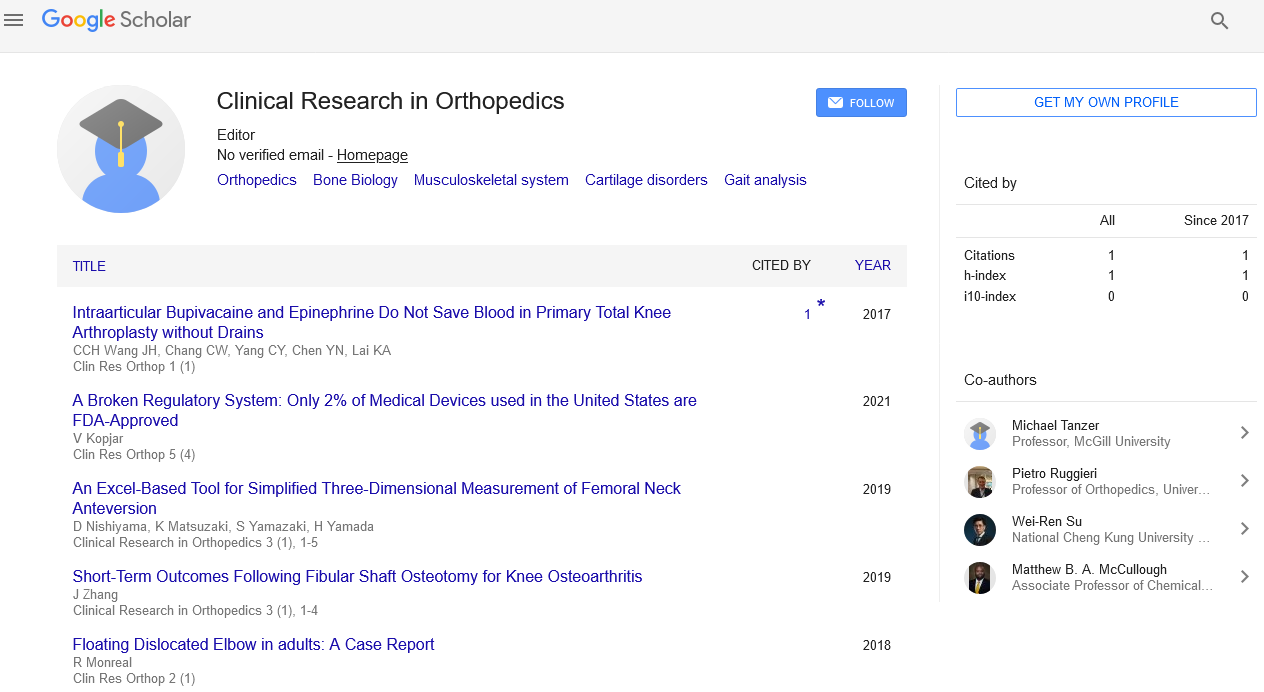Concepts in beaming of the midfoot in surgical treatment of charcot neuroarthropathy
Kevin Ragothaman, Zarick C and Wynes J
MedStar Georgetown University Hospital, USA
University of Maryland, Baltimore, USA
: Clin Res Orthop
Abstract
Charcot neuroarthropathy is a devastating complication of neuropathy, particularly in those with diabetes mellitus. The high complication rate and economic burden suffered by those with this condition calls for treatment methods that allow patient’s with this pedal deformity to ambulate. The most common presentations of Charcot foot involve the tarsometatarsal joints and the hindfoot. Certain radiographic parameters, including cuboid height and Meary’s angle have also been shown to increase the risk of ulceration, a major risk factor for amputation when paired with deformity. In these instances, beaming the medial and lateral columns of the affected foot using large diameter screws allows for correction of deformity and distribution of weightbearing forces that these patients’ feet are unable to endure. A previous retrospective cohort study has shown improvement in radiologic alignment in patients that underwent medial, lateral, and hindfoot beaming. The benefit of particular screw design and implant material are compared and discussed. Furthermore, various techniques and constructs will be reviewed. Cases can commonly be complicated by concomitant soft tissue infection and osteomyelitis, which is also discussed.
Biography
Kevin Ragothaman has completed his doctoral degree from Western University of Health Sciences and undergraduate at University of Washington. He is currently a 2nd year resident physician and surgeon at MedStar Washington Hospital Center and Georgetown University Hospital. He has published in reputed journals and has received poster awards from the Diabetic Limb Salvage Conference and the American College of Foot and Ankle Surgeons.
E-mail: kevin.ragothaman@gmail.com
 Spanish
Spanish  Chinese
Chinese  Russian
Russian  German
German  French
French  Japanese
Japanese  Portuguese
Portuguese  Hindi
Hindi 